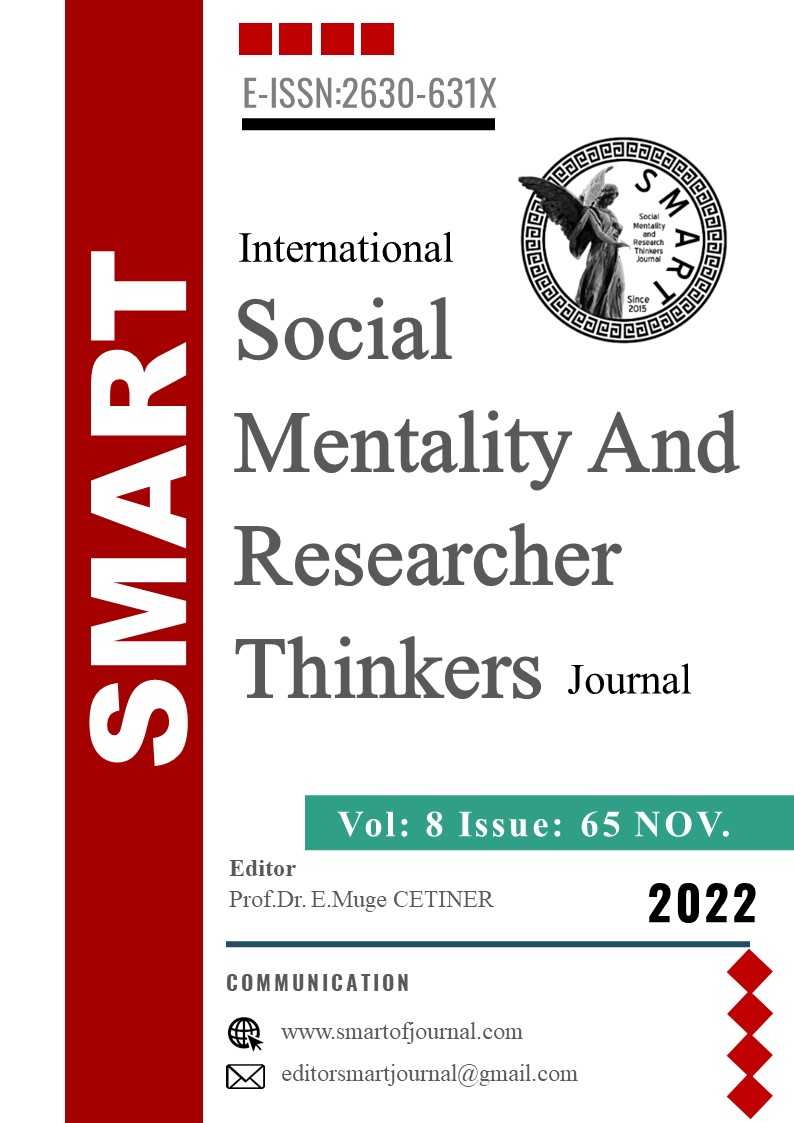Rönesans ve Öncesinde, Görsel Sanatlar Alanında Üstün/Özel Yetenekli Çocukların Keşfedilmesi ve Sanat Eğitimi Biçimi
Author :
Abstract
Akademik eğitim ortaya çıkmadan önceki süreç tarihte Rönesans dönemine denk gelmektedir. Rönesans, şairlerin, heykeltıraşların, bestecilerin, ressamların, yazarların ve daha birçok alanda var olan yeteneklerin adeta yeryüzüne akın ettiği bir zaman dilimidir. O dönem için sanatçı ve zanaatçı ayrımı mevcut değildir. Üstün yetenek bir insana bahşedilmiş en güzel hediyedir. Tabi ki eğitimini kusursuzca almış her yetenek için başarı kaçınılmaz olacaktır ve adı üne kavuşmuş birçok sanatçı bu tarz bir eğitimden geçmiştir. Rönesans Dönemi henüz sanat akademilerinin kurulmadığı, okul eğitim sisteminin var olmadığı, çocuk sanatçının usta-çırak ilişkisi ile atölye eğitimi aldığı bir süreç mevcuttur. Atölye eğitimine gelmeden önce ailesi çocuğun temel eğitimini almasını sağlamakta, sonrasında aile çocuğunun yeteneklerini keşfetmekte ve onu yeteneğine uygun bir ustanın yanına çırak olarak vermektedir. Loncalar tarafından denetlenen bu eğitim sistemi farklı kaynaklara göre 3 ila 8 yıl arasında sürebilmektedir. Katı kuralları olan loncalar bir yandan sanatçının alması gereken eğitimin kalitesini denetlerken bir yandan da sanatçının bu evrede nasıl davranması gerektiğini denetlemişlerdir. Ustasına aldığı siparişlerde yardım ederek kendini geliştiren çırağın zamanla ustasından ayırt edilemeyecek kadar iyi resmetmeye başlaması gerekmektedir. Eğitimini başarılı bir şekilde tamamlayan çırak ustasından ayrılıp bağımsız bir sanatçı olarak çalışmaya başlayabilmektedir. Rönesans’ın en tanınmış ressam ve heykeltıraşlarının da bu tarz bir eğitimden geçtiği saptanmıştır. Özellikle en eski sanat tarihçisi olarak bilinen Giorgio Vasari’nin 16. yüzyılda yazdığı Sanatçıların Hayat Hikâyeleri isimli kitabında birçok ünlü sanatçının yanında Botticelli, Leonardo da Vinci, Michaelangelo ve Raphaello gibi sanatçıların eğitim biçimleriyle ilgili önemli bilgiler verildiği görülmüştür. Bu makale Tarihsel Araştırma Tekniği kullanılarak yazılmıştır. Sonuç olarak Rönesans’tan bu yana üstün yetenekli çocukların saptanması, eğitim biçimi ve eğitim yeri oldukça büyük farklılıklar göstermiştir. Bugün kuralları belirleyen bir kurum olarak milli eğitim sistemleri var iken o zamanlarda bu sistemin yerine loncalar denetleyici bir mekanizma olarak yerini almıştır.
Keywords
Abstract
The process before the emergence of academic education coincides with the Renaissance period in history. The Renaissance is a time when poets, sculptors, composers, painters, writers and talents in many fields flood the earth. There was no distinction between artist and craftsman at that time. Superior talent is the best gift bestowed on a person. Of course, success will be inevitable for every talent who has received a perfect education, and many famous artists have gone through this kind of education. In the Renaissance Period, there was a process in which art academies were not established, no school education system existed, and the child artist received workshop training with the master-apprentice relationship. Before coming to the workshop, the family ensures that the child receives basic education, then the family discovers the talents of the child and gives him as an apprentice to a suitable master. This education system, which is supervised by guilds, can last between 3 and 8 years, according to different sources. Guilds with strict rules not only controlled the quality of the education that the artist should receive but also supervised how the artist should behave in this phase. The apprentice, who improves himself by helping his master with the orders he receives, has to start painting so well that it cannot be distinguished from his master over time. After successfully completing his education, the apprentice can leave his master and start working as an independent artist. It has been determined that the most well-known painters and sculptors of the Renaissance also went through this kind of education. In particular, Giorgio Vasari, who is known as the oldest art historian, wrote in the 16th century, in his book named Life Stories of Artists, and it has been seen that important information is given about the education styles of artists such as Botticelli, Leonardo da Vinci, Michaelangelo, and Raphaello, as well as many famous artists. This article was written using the Historical Research Technique. As a result, since the Renaissance, the identification of gifted children, the way of education, and the place of education have shown great differences. While there are national education systems as an institution that determines the rules today, guilds took their place as a supervisory mechanism instead of this system at that time.
Keywords
- 1. Adams, L. S. (1993). Art and Psychoanalysis, HarperCollins Publishers, New York
- 2. Cartwright, M. (2020). Life in a Renaissance Artist’s Workshop, https://www.worldhis tory.org/article/1611/life-in-a-renaissance-artists-workshop/, Erişim Tarihi: 14.09.2022
- 3. Garrard, M. (1980). Artemisia Gentileschi's Self-Portrait as the Allegory of Painting, The Art Bulletin, Vol. 62, No. 1 Published by: CAA (Mar., 1980), pp. 97-112
- 4. Gombrich, E. H. (2004). Sanatın Öyküsü, Çev. Erol Erduran & Ömer Erduran, Remzi Kitabevi, İstanbul
- 5. Krausse, Anna-Carola(2005). Rönesans’tan Günümüze Resim Sanatının Öyküsü, Çev. Dilek Zaptcıoğlu, Literatür Yayıncılık, İstanbul
- 6. Levent, F. (2020). Bilim ve Sanat Merkezlerinde Eğitim, Mevcut Durum ve Politika Önerileri, İlke Politika Notu 16, Yayın No:70, Kasım 2020, Sayfa:1-22
- 7. Magee, B. (2017). Felsefenin Öyküsü, çev. Bahadır Sina Şener, Alfa Yayınları, İstanbul
- 8. McCormick, M. (2008). The Renaissance Art Academies: Implications for Leadership Education Practices and Research, Journal of Leadership Education, Vol. 7, Issue 3, New York
- 9. Orhon, C. (2022). Akademi, http://www.kumsanat.com/blog/37- akademi.html#:~:text=%C4%B0lk%20ger% C3%A7ek%20akademiyse%201563%E2%80%B2te,dir%20(Accademia%20del%20Disegno). Erişim Tarihi: 19.09.2022
- 10. Shiner, L. (2010). Sanatın İcadı, Çev. İsmail Türkmen, Ayrıntı Yayınları, İstanbul
- 11. Skillen, J. (2022) Who Makes The Art Work, https://www.artfaithhistory.org/who-makes-the-art-work-1, Erişim Tarihi: 13.09.2022
- 12. Şen, Ü. S. (2005). “Sanat Eğitiminde Bilimsel Araştırma Yöntemlerinin Kullanılması”, Atatürk Üniversitesi Sosyal Bilimler Enstitüsü Dergisi. Cilt 5, Sayı 1, Sayfa 343-360, Erzurum
- 13. Ünlü, M. M. (2018). Orta Çağ ve Rönesans Dönemi'nde Ortaya Çıkan Estetik Düşüncelerin Sanat Eğitimine Yansımaları, Necmettin Erbakan Üniversitesi, Sosyal Bilimler Enstitüsü, Yayınlanmış Yüksek Lisans Tezi, Konya
- 14. Vasari, G. (2016). Sanatçıların Hayat Hikâyeleri, Çev. Elif Gökteke, Sel Yayıncılık, İstanbul
- 15. Wallace, I. (2014). The Evolution of the Artist’s Studio, From Rennaissance Bottega to Assembly Line. https://www.artspace.com/magazine/art_101/art_market/the-evolution-of-the-artists-studio-52374, Erişim Tarihi: 05.09.2022
- 16. Witcombe, C. (2012). The Artist in the Renaissance, http://arthistoryresources.net /renaissance-art-theory- 2012/renaissance-artist.html, Erişim Tarihi: 15.09.2022





